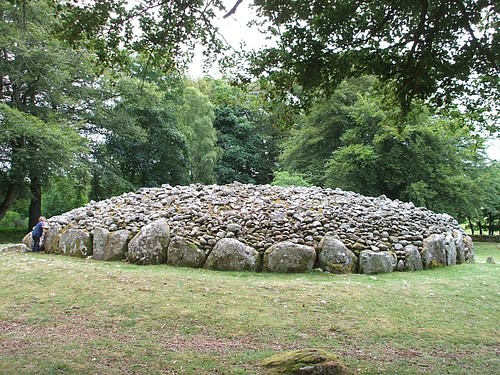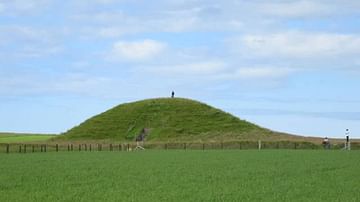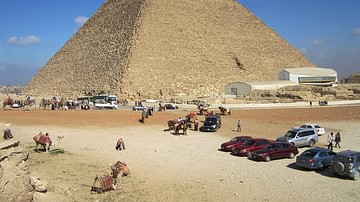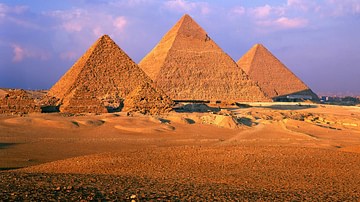
A tomb is an enclosed space for the repository of the remains of the dead. Traditionally tombs have been located in caves, underground, or in structures designed specifically for the purpose of containing the remains of deceased human beings and, often, their possessions, loved ones, amulets, or sacred items to either protect or direct the soul.
In the ancient Mesopotamian tomb known as The Great Death Pit, discovered in the ruins of the city of Ur, and dated to the Early Dynastic Period (2900-2334 BCE), the servants of royalty were buried with the king to serve him in the afterlife and this same practice was observed elsewhere. Tombs often contain so-called "grave goods" - items the deceased will require in the next life, but also anything the departed was especially attached to. The Natufian Grave in Israel, dated to c. 12,000 BCE, contained the remains of a man buried with his dog.
Tombs have always been considered the homes of the dead and every tomb ever constructed was built with this concept in mind. The tomb is the final resting place of a dead person whose soul, however, would live on in another realm. The construction of a tomb would also reflect the status of the person buried there and the beliefs of a certain culture concerning the afterlife. Ancient cultures from Mesopotamia to Rome maintained that the dead lived on after life and stories concerning ghosts (such as the one famously told by the Roman writer Pliny the Younger in c. 100 CE) have to do with hauntings caused by the improper burial of the dead.
Ancient inscriptions from cultures as diverse as Mesopotamia, China, Greece, and the Maya all cite the importance of a respectful burial and remembrance of the dead and the dire consequences of failing to do so. The tomb, therefore, was recognized an important aspect of mortuary rituals and has been for over 5,000 years.
Tombs in Ancient Egypt
The most elaborate tombs in ancient times were those built by the Egyptians for their kings, the pharaohs. In the Early Dynastic Period (c. 3150-c. 2613 BCE), the Egyptians built mastabas, tombs made of dried clay bricks which were then used to shore up shafts and chambers dug into the earth. In every mastaba there was a large room for ceremonies honoring the spirit of the deceased and an adjoining smaller room, the serdab, where a statue of the dead person would be placed so that the spirit could witness and enjoy the ceremonies. The mastaba - the oldest form of the tomb in Egypt - continued in use for the common people but for royalty it was replaced by the structure known as the pyramid during the Old Kingdom (c. 2613-2181 BCE).
Commencing with the Step Pyramid at Saqqara, the royal pyramids would reach their height in splendor in the construction of the Great Pyramid of Giza (built for King Khufu, r. 2589-2566 BCE). The royal pyramids were adorned with paintings depicting the life and accomplishments of the deceased king and filled with all those necessities the spirit would need in the afterlife in the Field of Reeds, the Egyptian paradise. Monarchs were also interred in the area known as The Valley of the Kings and their tombs were elaborate eternal homes, highly ornamented, which reflected their status as divine rulers.
Mesopotamian Tombs
In ancient Mesopotamia, tombs resembled the mastaba generally but, as in Egypt, the tombs of royalty were more ornate. Archaeological excavations carried out in the 1920s by Sir Charles Leonard Wooley uncovered the Royal Tombs of Ur - considered the oldest in Mesopotamia - in which were found many exquisite works of gold, lapis lazuli, and carnelian (most notably the diadem of Queen Puabi). In the one tomb Wooley called The Great Death Pit, the bodies of six guards and sixty-eight ladies-of-the-court were found. It is thought these were the favored of the king and were chosen to accompany him to the afterlife.
The Mesopotamians, whether south in the region of Sumer or north in Akkad, were so concerned with the proper burial of the dead that they often built tombs inside, or next to, their homes so they could continue to care for the deceased and prevent the problems which arose from hauntings (this same practice was observed by the Maya culture which also maintained a deep-seated fear of ghosts). Ghosts in ancient Mesopotamia were understood as a fact of life and, while some were dealt with sympathetically, people generally preferred to avoid visitations from the dead.
To prevent such hauntings, funerary rituals had to be observed carefully and the tomb properly equipped for the soul of the departed. Personal possessions were always included in these tombs as well as gifts, even modest ones, which were to be offered by the deceased to the gods of the underworld upon arrival there. Kings, of course, were laid to rest with more elaborate presents for the gods as the grave goods excavated from tombs throughout Mesopotamia attest.
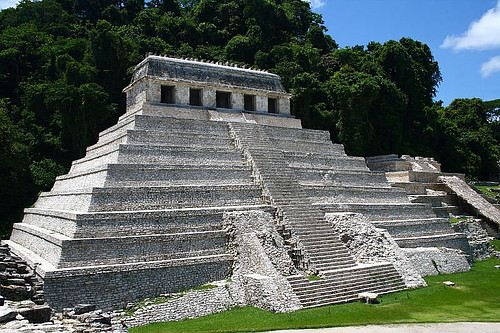
Tombs of the Maya & King Pakal
The tombs of the Maya rulers were constructed in much the same way as those of the kings of other cultures in that they were opulent in both style and structure and filled with all the necessities one might require in the afterlife. The walls of the tomb of King K'inich Janaab Pakal of Palenque (r. 603-683 CE) were adorned with images of Pakal's transition from the earthly life to the realm of the gods and he was buried in an elaborately carved sarcophagus reflecting the same theme.
Though some writers have claimed the carvings depict Pakal riding a rocket and are, therefore, proof of ancient alien interaction with the Maya, this theory is not considered tenable by the scholarly community. The carving on the sarcophagus which appears to some to be a rocket is recognized by scholars as the Tree of Life which Pakal is ascending to paradise. King Pakal, like other rulers, was given a tomb worthy of his stature and accomplishments and it is thought to have been constructed by his subjects who considered him worthy of that honor. The tomb of the first emperor of China, however, was begun before his death and was built by the conscripted labor of workers from every province in the country.
Chinese Tombs & the Mausoleum of Shi Huangti
The tomb of Shi Huangdi in China (r. 221-210 BCE) contained over 8,000 terra cotta warriors, their weapons, chariots, and horses so that the emperor would have a standing army at his command in the afterlife. This tomb, which rises to a height of 141 feet (43 metres) was first discovered in 1974 in the city of Xi'an and has yet to be excavated because of the fear of the various traps Shi Huangti is said to have devised to protect the vast treasure he was buried with.
Over 700,000 workers were conscripted to build the tomb which was supposed to symbolize the world over which Shi Huangti reigned and would continue to rule in the afterlife. Other tombs in China, not nearly so grand in size or scope, also reflect the belief that the deceased would continue to exist in some form in another realm and could continue to exert influence on the living, for good or ill, depending on how their remains had been respected and how their memory continued to be honored. Dogs in ancient China were often buried or entombed with the corpse of their owner to serve, protect, and guide the soul of the deceased in the afterlife.
Tombs in Greece
In Greece, the tombs of the wealthy were closely linked, architecturally, to the modern mausoleum in that they were often ornately decorated stone buildings housing the reclining dead. As the Greeks believed that remembrance of the dead was necessary for the continued existence of the spirit in the afterlife, Greek tombs frequently pictured the deceased in familiar settings - sitting down to dinner, enjoying the company of friends and family, reading, or relaxing with their dog - in order to remind the living of who that person had been in life and how they still existed after death.
Greeks commemorated the anniversary of a loved one's death by visiting their tomb and conversing with them, always making sure to speak their name to show the dead they were remembered. In Athens, below the Acropolis, the graves of common citizens depict the same sort of scenes as those of the more affluent and always emphasize the importance of remembrance. Soldiers who were killed in action were commonly buried on the field in mass graves beneath one single marker (usually a monument naming the battle and the date) served to honor the fallen. It was up to the living, however, to keep the deceased's memory alive and frequently a marker would be erected by an individual's family toward that end and would serve in place of an actual tomb at the anniversary ceremony of one's death.
Tombs from the Mycenaen Period (c. 1700-1100 BCE) are known as tholos, or beehive, tombs which are thought to have been derived from early Minoan architectural advances on Crete. One of the most famous of these tholos tombs is the Treasury of Atreus (also known as the Tomb of Agamemnon, pictured above) which was built c. 1250 BCE. As in other cultures, these tombs were understood as the final resting place of the deceased and so required constant upkeep to honor that person's spirit in the afterlife by remembering their time on earth.
Neolithic Tombs of Scotland & Ireland
The tombs in Scotland, such as the grave passage tomb of Maeshowe in Orkney, show a remarkable similarity to those of ancient Greece, particularly the tholos tomb. The Tomb of the Eagles (also on Orkney) dates to 3000 BCE and was found to contain the bones of over 300 people buried there over time. Among the skeletal remains of human beings were those of over 700 white-tailed eagles which have given the tomb its name.
No personal possessions were discovered in either of these tombs but that absence has been ascribed to ancient looting of graves. The Neolithic tombs throughout Scotland were all very purposefully designed, as in other cultures, as homes of the dead leading down to an underworld afterlife. At Maeshowe, for example, to enter the tomb one would need to move aside a great stone and then descend down into the chamber which represented the nether world.
This same construction and ideology can be seen in the famous passage tomb of Newgrange in Ireland which is one of the oldest tombs in the world (pre-dating the Pyramids of Giza and the Mycenaean Civilization) built c. 3200 BCE. Newgrange, like Maeshowe, was carefully constructed to admit a single ray of light into the darkness of the inner chamber at the winter solstice and this, it is thought, was to symbolize the eternal life of the deceased.
The oldest passage tombs in Ireland are in Sligo County with the largest megalithic cemetery at Carrowmore. Other tombs throughout Ireland (known as dolmens) are constructed much along the same lines as the Carrowmore tombs. The Brownshill Dolmen in County Carlow follows the custom of a burial chamber in the earth but is distinguished by a capstone perched on upright megaliths weighing 100 metric tons (thought to be the heaviest stone in Europe) and the tomb known as The Mound of the Hostages, in Meath, is similar to Newgrange in that it was constructed (c. 3000 BCE) so that the rising sun, on certain days, lights up the interior burial chamber to symbolize re-birth and the light of life.
Tombs of Ancient India
This concept is equally apparent in the tombs of India where, originally, tombs were caves or carved into rock cliffs but, eventually, evolved into mausoleums which celebrated the life of the deceased and ensured their immortality through remembrance by the living. Cremation was the most common method of dealing with the remains of the dead in India and, for this reason, tombs were not employed to the same degree as they were in other cultures.
Hindu religious beliefs encouraged cremation and the spreading of one's ashes but, with the introduction of Islam to the country, the importance of the physical remains of the deceased was emphasized and tombs became more widespread as a means of honoring and remembering the dead. The most famous example of this, though not an ancient one, is the Taj Majal built in 1631 CE by Shah Jahan for his wife.
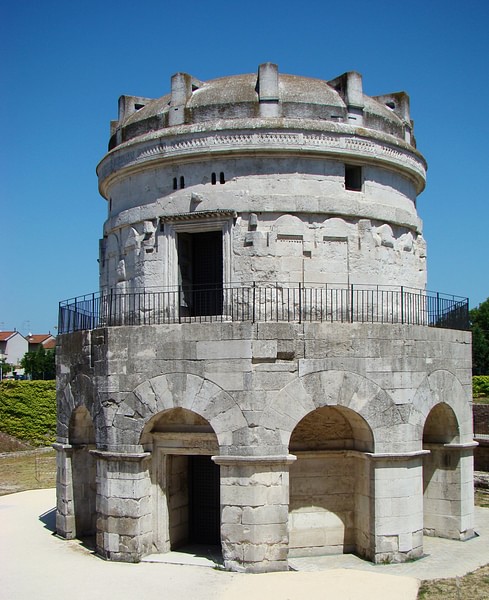
Roman Tombs & Catacombs
Tombs in ancient Rome followed the same course of development as in Egypt and elsewhere, beginning with burial underground or in caves and evolving into more elaborate structures to house the dead. Roman tombs also celebrated the life of the individual but, unlike those of Greece or India, often featured inscriptions rather than sculpture or relief whereby the deeds of the deceased could be read and recited.
Romans were buried in cemeteries which were located outside of the city in order to mark the divide between the land of the living and that of the dead. As in Mesopotamia, the Romans feared the return of the dead in the form of ghosts and, unless they had been summoned through divination for a specific purpose or came to deliver a message, spectral visitors were considered a potent evil. As in other cultures, proper attention to the construction and outfitting of the tomb was thought to prevent such hauntings.
Wealthy Romans were interred with great flourish in elaborate tombs while those of more modest means were laid to rest in caves outside the city or were cremated. Cremation of the dead was the most popular means of disposing of corpses and, afterwards, the ashes were held in an urn which was kept in a place of honor in the household. The rise of Christianity, however, and the new belief in the bodily resurrection of the dead, led to a decrease in cremations and, simply lacking room for the deceased in cemeteries, catacombs dug in the earth, with shelves for corpses in the walls, became the most common form of the tomb in ancient Rome.
